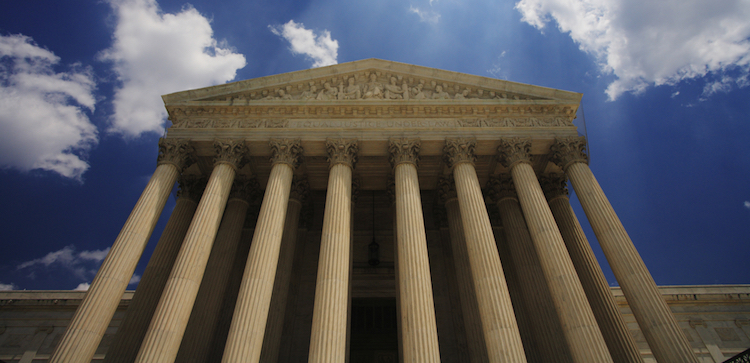Supreme Court rules against immigrants seeking bond hearings and injunctive relief

Image from Shutterstock.
The U.S. Supreme Court on Monday ruled against immigrants seeking bond hearings and injunctive relief through class actions. Both decision were based on statutory text.
In Johnson v. Arteaga-Martinez, the high court ruled that the Immigration and Nationality Act does not require the government to give bond hearings to detained citizens under deportation orders after six months of detention. The court interpreted a provision of the law that says a person may be detained or released under terms of supervision after a 90-day removal period.
In the second case, Garland v. Aleman Gonzalez, the Supreme Court held that district courts didn’t have the power to consider classwide claims by noncitizens seeking an injunction requiring the kind of bond hearings sought in the first case.
The plaintiff in the first case, Mexican citizen Antonio Arteaga-Martinez, had sought withholding of removal because of a reasonable fear of persecution if he returned to Mexico. He had contended that the government was required to show by clear and convincing evidence in a bond hearing that he was a flight risk or a danger to the community.
The court rejected the claim in an opinion by Justice Sonia Sotomayor.
“On its face, the statute says nothing about bond hearings before immigration judges or burdens of proof, nor does it provide any other indication that such procedures are required,” Sotomayor wrote.
Arteaga-Martinez had argued that he was entitled to a bond hearing under Zadvydas v. Davis, a 2001 decision that found that immigrants can be held only long enough to accomplish the purpose of removal. The case involved a noncitizen who could find no country to accept him, making his removal not reasonably foreseeable, SCOTUSblog previously reported.
The court in Zadvydas read the statute in way to avoid Fifth Amendment concerns about indefinite detention and found that the period reasonably necessary to bring about removal was presumptively six months.
Sotomayor noted that Arteaga-Martinez had made a due process argument that was not addressed by the courts below because they ruled on statutory grounds. The constitutional claims must still be addressed by the lower courts, Sotomayor said.
Justice Clarence Thomas wrote a concurrence joined by Justice Neil Gorsuch. One of his arguments was that the court should overrule Zadvydas “at the earliest opportunity.”
Justice Stephen Breyer, the author of Zadvydas, partly concurred and partly dissented.
“In my view, Zadvydas controls the outcome here,” Breyer wrote.
“Since the court remands this case for further proceedings,” Breyer wrote, “I would add that, in my view, Zadvydas applies (the court does not hold to the contrary), and the parties are free to argue about the proper way to implement Zadvydas’ standard in this context, and, if necessary, to consider the underlying constitutional question, a matter that this court has not decided.”
The author of the majority opinion in the second case was Justice Samuel Alito.
Hat tip to SCOTUSblog.



